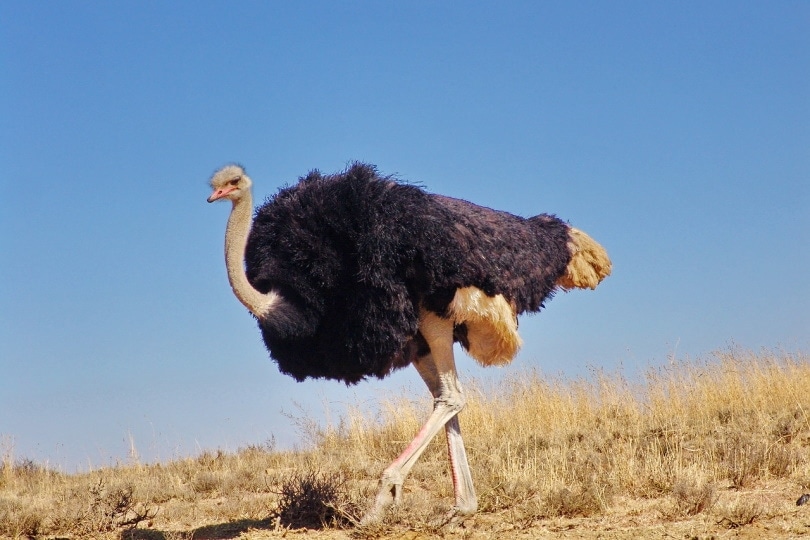Do Ostriches Have Hollow Bones? (The Surprising Answer!)
Last Updated on

Ostriches are among the largest birds walking our planet today. Out of an estimated 9,000 to 10,000 species of birds on Earth, 57 of those species are flightless, including the ostrich.
While most birds’ bones aren’t entirely hollow, a cross-section of the bone would look like a sponge compared to a human’s solid bone. Which begs the question of whether ostriches have hollow bones? Unlike most other birds, ostriches have solid bones. Since ostriches don’t need to fly, there would be no need for them to have hollow bones.
In addition to solid bones, ostriches have many body structures that look set them apart from flighted birds. here are some of the differences between ostrich body structures and other birds.

Ostrich Body Structure: Do Ostriches Have Hollow Bones?
The ostrich’s body structure may seem unusual. It may seem amazing that such a large body can balance on such thin legs. However, the legs are placed perfectly to balance the body’s center of gravity. The ostrich’s thin legs give them great running speed, which is important, as they are prey animals and cannot fly. Ostriches can run up to 40 mph and can cover over 16 feet in a single stride.
Additionally, the ostrich’s leg bones are not hollow; they are solid like a human’s bones. This structure makes it easier for them to maintain terrestrial travel and allows them to run for long distances.
An ostrich is running is aided by the shape of its feet. Unlike most birds, ostriches have only 2 toes on each foot and have a large nail on the inner toe resembling a hoof.

Ostrich Characteristics & Behavior
Contrary to popular belief, ostriches do not bury their heads in the sand when threatened. An ostrich will normally run when threatened, though they can fight as well. Despite being thin, the ostrich’s legs are very strong and a kick from an ostrich’s legs can kill a lion.
Ostriches are also the only living bird to secrete urine separate from feces. Most birds secrete a mix of urine and feces from the cloacal vent.
While most birds have two parts to their stomach the ostrich has three stomachs in total.
Ostriches also have a unique breastbone shape when compared to other birds. Flighted birds have what’s called a keel. The keel is an extension of the sternum and supports a very powerful chest muscle that Birds use to maintain flight. However, ostriches and some other flightless birds do not have a keel and have a much thinner weaker breast muscle.
Unlike most other birds which have a cloaca, ostriches also have a copulatory organ. The male ostrich has a retractable copulatory organ that measures almost eight inches long.
Since ostriches do not have teeth, they swallow stones to grind up the food in their stomachs. An adult ostrich will carry around two pounds of stones at any given time.
Related Read: Can Ostriches Swim? Everything You Need to Know!

Conclusion
Public interest in ostriches has grown recently. The population of ostriches in the wild is declining and conservation and reintroduction efforts are important. These efforts are gaining traction quickly amongst animal lovers and common folk alike. We can all do our part to help preserve the habitat and populations of these unique, giant, flightless birds.
Featured Image Credit: polyfish, Pixabay
About the Author Luxifa Le
Luxifa is a freelance writer with a passion for animal science and technology. She loves to share the world of animal science with people to help them make informed decisions for themselves and their pets. Knowledge is power and she loves to help everyone become the most informed they can be.
Related Articles:
10 Types of Hummingbirds in Arkansas (With Pictures)
8 Types of Hummingbirds in Nebraska (With Pictures)
5 Types of Hummingbirds in Idaho (With Pictures)
3 Types of Hummingbirds in Mississippi (With Pictures)
8 Types of Hummingbirds in Kansas (With Pictures)
5 Types of Hummingbirds in West Virginia (With Pictures)
5 Types of Hummingbirds in Ohio (With Pictures)
Where Do Nuthatches Nest? Nuthatch Nesting Habits Explained
